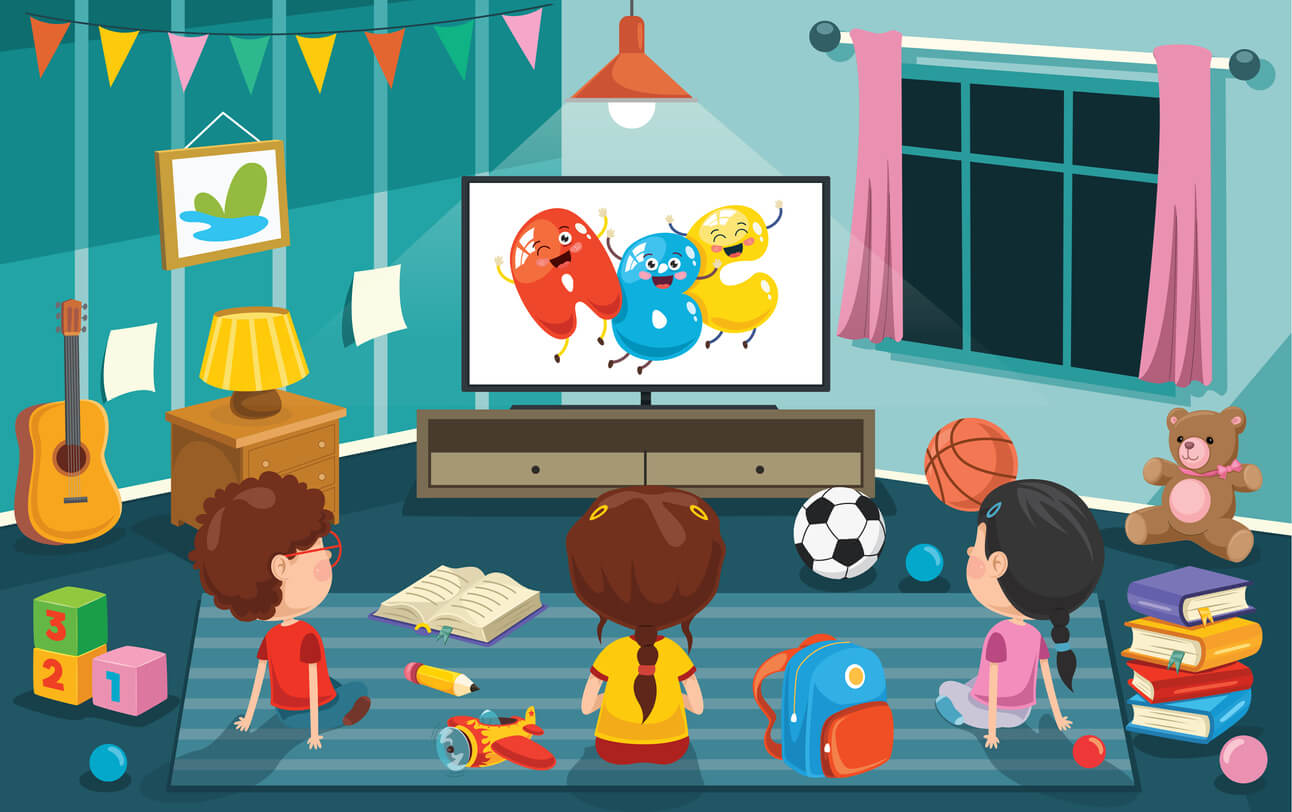How to Choose Appropriate Cartoons for Your Children


Written and verified by the psychologist Elena Sanz Martín
Children love cartoons and those funny characters that accompany them from the screen. If you think back to your own childhood, some of your best memories probably have to do with these types of children’s programs. However, there are many options available, and not all of them are equally suitable and beneficial. Therefore, today we want to guide you on how to choose appropriate cartoons for your children.
Although they’re sometimes demonized, the truth is that children’s series aren’t negative in and of themselves. In fact, they not only entertain children, but also transmit values, show them how to behave in society, and contribute to multiple learning processes. Maybe your little ones have learned their colors thanks to a children’s program or they acquire vocabulary in a new language thanks to these cartoons. Let’s see more below.
Take age into account when choosing appropriate cartoons
This is one of the main parameters to take into account. A baby and a school-age child shouldn’t watch the same programs, as their brain maturation and needs are different. In this regard, a premise promulgated and supported by a large number of experts and pediatric associations is the following: Children under two years of age shouldn’t be exposed to screens.
This may seem like a very blunt statement, but the truth is that studies have proven how harmful these audiovisual stimuli are for little ones. Keep in mind that babies’ brains are still very underdeveloped and that these first years of life are a critical stage in which they undergo changes in brain volume, structure, and connections. And screens can interfere with this process.
The stimulation a two-year-old needs is mainly contact with attachment figures and interaction with the environment in a natural, non-virtual setting. Watching cartoons can cause a permanent state of alertness, irritability, attention and impulsivity problems, and difficulties in the development of empathy and socialization.

Analyze the type of stimulation
When choosing appropriate cartoons, we usually focus on the characters and the plot, but we don’t consider an aspect of great importance: The type of stimulation offered to children. There are certain children’s programs that have slower rhythms in the narrative and in the presentation of images, but others tend to overstimulate.
Therefore, they present short shots, fast scenes, and intense lights and sounds. In this way, they capture children’s attention. In fact, they’re somewhat hypnotizing and addictive for them. Of course, they remain glued to the screen, without being distracted and without demanding their parents’ attention, but the hyper-stimulation they receive isn’t positive, so it’s preferable to avoid these fast-paced cartoons.
As much as possible, opt for slower and calmer children’s series with long scene shots and without very strident background sounds. In this way, we avoid affecting the child’s cognitive functions, sensory processing, and emotional processes.
Observe the values and models that are offered
Another aspect to consider is the type of values transmitted by the programs, as well as the attitudes and behaviors modeled by the characters. Children, through vicarious learning, internalize the behaviors and attitudes of their favorite cartoons. Consequently, they tend to imitate them and assimilate the words they use and the reactions they have. Therefore, it’s important to make sure that these examples are positive.
Some children’s series promote very positive teachings for little ones. However, there are other programs whose protagonists have little emotional control, are lonely, or don’t speak properly. All these aspects should be taken into account, as it’s information that goes directly to the developing mind of children.

Choosing appropriate cartoons and supervising what your children watch
Finally, it’s up to each family to choose the children’s programs that best suit the education they want to transmit to their children. However, aspects such as age recommendation, type of stimulation, and values are the main parameters that should be considered. In spite of this, it’s highly recommended that you watch the series and cartoons together with your children instead of leaving them alone in front of the screen.
Watching together will allow you to understand first-hand what they’re watching, generate conversations with them, and make any clarifications we consider relevant. With all this in mind, there’s no need to fear when your children spend some leisure time enjoying their favorite programs. If the right choices are made, they can be very educational and a great complement to your children’s learning.
All cited sources were thoroughly reviewed by our team to ensure their quality, reliability, currency, and validity. The bibliography of this article was considered reliable and of academic or scientific accuracy.
- Gómez Serés, M. V. (2017). Series infantiles. Una aproximación de análisis pedagógico. Colegio Oficial de Pedagogía de Catalunya. https://www.pedagogs.cat/reg/es/3244
- Soni, A., & Srivastava, S. Growing Cartoon Trends Pose as Hyper-stimulant to Adolescents that Cultivates Addiction, Impair Creativity, and Inhibits Arithmetic Efficiency. https://doi.org/10.31234/osf.io/zpfs5
- Naciones Unidas. (2019). Recomiendan que los niños no usen pantallas hasta los dos años. https://news.un.org/es/story/2019/04/1454801
This text is provided for informational purposes only and does not replace consultation with a professional. If in doubt, consult your specialist.
